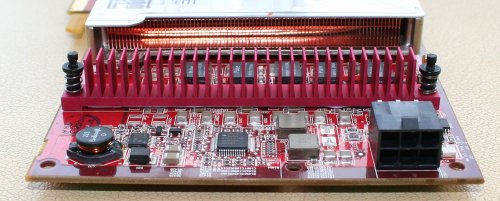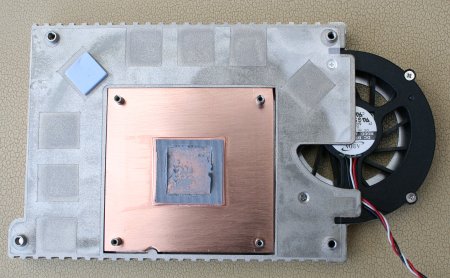SAPPHIRE RADEON X1800 XL evaluation
Those readers who aren't familiar with ATI's recently launched X1000-series family of GPUs would do well to look at our initial technology discussion here. It delineates what makes the RADEON X1800 XT (and by inference the X1800 XL) tick along. In a nutshell, ATI's engineered an efficient design that tightens up performance in key areas. General processing has seen a performance rise over the X850-series by using intelligent, small-block pixel threading to keep the GPU busy at all times. The memory controller's also been improved to reduce access latency. There's now support for Shader Model 3.0, offering you wonderful effects at minimal GPU expense, and, just as importantly, an entire video display engine, dubbed Avivo, tacked on to every card in the X1000-series family. ATI scores a first by implementing antialiasing and HDR concurrently. So, in basic summary, for given core and memory speeds and evaluated against shader-heavy titles, the X1800 XT/XL will be faster and better-featured than the X850 range of cards they effectively replace.
ATI's succumbed to housing its latest iteration of graphics cards on extra-long PCBs. SAPPHIRE's X1800 XL is fully 230mm long, exactly the same size as a regular GeForce 7800 GTX, and around 10mm longer than a GeForce 7800 GT card. The relative size of the PCB is best illustrated by taking a look at how small the PCI-Express interface looks in comparison.

A look at the card from one side show the single-slot cooling. Space-permitting, you could easily house one of these in a Shuttle XPC SFF unit.

A closer look at the front shows that ATI's X1800-class of GPUs require external power from the PSU, supplied via the 6-pin PCIe connector. Based on a 90nm process and built by TSMC, the X1800 cores pack in around 320m transistors and, for the X1800 XL, require about 95W to run at default speeds of 500MHz core and ~1GHz memory. A single, wide heatsink covers the hottest-running power-delivery components, and you can see the copper cooler just behind.

One family benefit of purchasing into the X1800 range is the use of two dual-link DVI transmitters as standard, meaning you can drive a couple of extra-high definition displays from just one card. Think of two Apple 30-inch TFTs, each running at a native 2560x1600. The S-Video socket in the middle offers VIVO, thanks to SAPPHIRE adding in ATI's Rage Theater ASIC on the PCB, right below the cooler.

The cooler comes away by removing four main outer screws. The majority of the weight of the card is invested in a copper-based heatsink with a slight cutout for the large core. SAPPHIRE adds in a generous amount of thermal interface material. You can also see how the card's memory is arranged; right around the core and physically connected to the heatsink via thermal pads. Much like the X850-series of cards, SAPPHIRE uses an off-centre fan for cooling, thereby pushing heat across the heatsink's fins and out into the case.

Note the VIVO Rage Theater ASIC to the left and the large core in the middle. The card's 256MB framebuffer is made up of 8 256MBit GDDR3 DRAM modules from Samsung. We'd normally expect some GC20 variety on a card where RAM is run at an effective 1GHz. However, on this card, the DRAM chips are Samsung's K4J55323QG-BC14, suggesting a native speed of no less than 1400MHz. That's impressively overspec. memory for what is ATI's second-from-top card.

All the fun and excitement is contained on the topside. There's literally nothing of interest on the rear. The central brace ensures that the heatsink is firmly attached to the core.
Compared with the range-topping Radeon X1800 XT, the XL model offers a maximum 256MB framebuffer and slower core and memory speeds, although it does so with a single-slot cooler. An efficient architecture that finally takes in Shader Model 3.0 should make it a worthwhile performance contender to NVIDIA's GeForce 7800 GT.
Heat and noise
According the ATI's information center the GPU temperature hovered at around 90c at all times. SAPPHIRE cards' fan-speed is usually regulated through the company's TriXX software, although, on this occasion, it failed to work as prescribed. In view of this, the sample card's fan would spin at markedly faster speeds within 30 seconds of initiating a 3D application. The speed and pitch would then often change during times of higher and lower GPU stress, with the end result being rather loud irritating. A working iteration of the TriXX tool should alleviate this problem, however.









